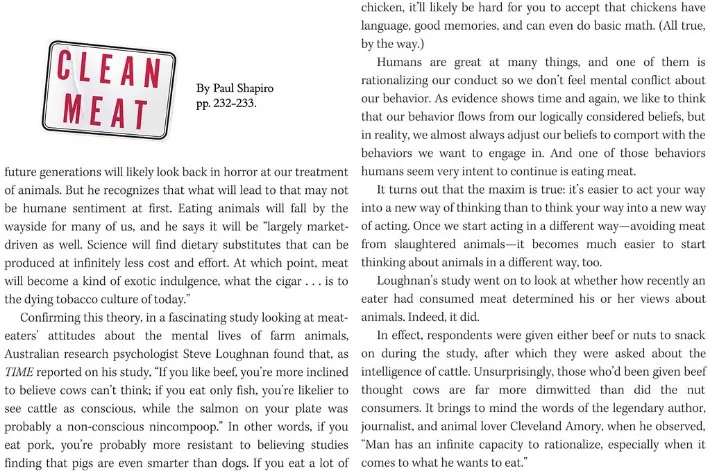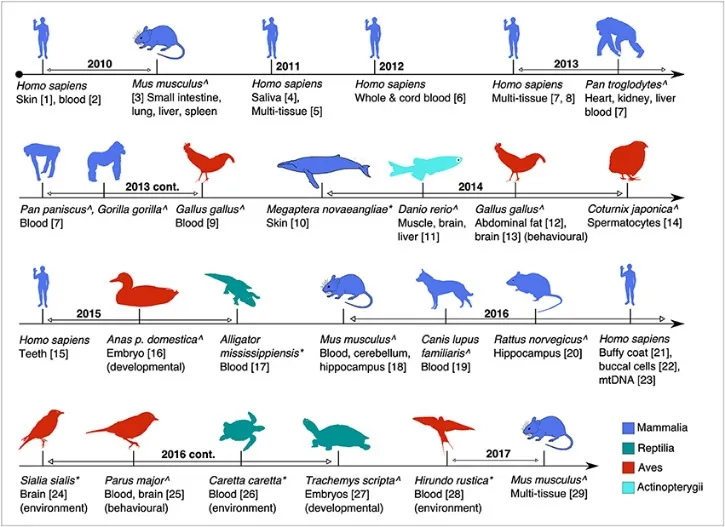Nutritional Aspects of Cattle Health
Normal blood plasma total Ca concentrations are 9–10 mg % and is tightly regulated.32 Calves, especially preweaned calves, absorb Ca very efficiently (90%). Older animals are less efficient in absorbing Ca, possibly due to reduced 1,25 dihydroxy vitamin D receptors on the intestine which stimulate Ca uptake. Calcium absorption increases 160% from one day prior to calving until eight days later. The calcium requirement for lactating cows is variable, with a minimum of 0.61% of the diet (DM basis)19 but can be increased to 1% especially when feeding additional fat in the diet. Besides hypocalcemia, deficiency is rare with a bone deformity known as rickets and osteomalacia in older cows.
While it is common to feed once daily, more producers are now feeding at least twice daily. Because cows like consistency, the more a producer feeds, the more likely the cows will eat. They are organic compounds that can be divided into two categories, water-soluble and lipid soluble.
Magnesium is an intracellular cation required for many enzymatic reactions. Its concentration in plasma is around 0.85–1.0 mmol/L.32 In cows absorption of Mg primarily occurs in the forestomach, while in the small intestine in young calves. It is primarily absorbed passively, but also through a Na dependent active transport system. Forages have adequate Mg, but absorption requires Na so feeding Na is necessary for Mg uptake. The requirement of Mg is 0.2% of diet DM.19 Deficiency can occur when pastures and feeds contain high amounts of K.

Whey does not form the clot and quickly dissociates for passage to the small intestine for further digestion and eventual absorption of amino acids, di and tri-peptides, and other nutrients. Assume the average weight of mature cows in your herd is 1,200 lb and that the cows are currently in late gestation. Using Appendix 2 (Breeding Cattle), find the section that lists nutrient requirements for the cows described. Note the cows should be gaining about 0.9 lb/d, expected DM intake is 22.3 lb and requirements are 1.7 lb/d (7.8%) for protein and 11.8 lb/d (52.9%) for TDN.
It is recommended that the practitioner utilize a ration balancing program to meet the described requirements and recommendations. This section will address the practical implementation of that information. The nutrient requirements of lactating Holstein cows are in Table 9.4
. The presence of the enzyme, renin, in the acidic environment of the abomasum in the preruminant Check this for Doeat.top Animal diet calf, results in casein forming a clot which is slowly degraded over the day.

Often termed the ‘true stomach,’ the abomasum functions similarly to the human stomach. Here, acids and enzymes digest the microbial proteins from the rumen and any undigested feed, preparing them for absorption in the intestines. Overall, whether producers raise beef as grass-fed or grain-fed, the animals still spend the majority of their life grazing on pastures and their meat is an excellent nutritional source. To learn more about beef cattle feed management, have a look at Penn State Extension’s Feed Efficiency workshop. The workshop covers a variety of topics, such as identifying animals that can efficiently convert feed into marketable products.
The process typically involves heating colostrum for 60 min at 60°C. Net energy for gain (NEg) – the energy value of a feed used for body weight gain above that required for maintenance. Body Condition Scoring (BCS) is vital for assessing the energy reserves of your cattle. By regularly monitoring BCS, you can make timely adjustments to the diet to ensure optimum health and productivity. Leveraging tools like HerdX®’s HerdView® App® and HerdView® Insights can provide you with invaluable data and insights to make informed decisions regarding nutrition. These tools empower you to optimize feeding strategies, monitor the health of your herd, and adapt to changes in real-time.
It is very common to feed this vitamin to cows in free-stall management situations. Health disorders, and average daily gain of Brown Swiss calves receiving two or four liters of good quality colostrum and their milk yield as cowsa. Animals require absolute amounts of nutrients (pounds, ounces, milligrams, etc.), but when balancing rations it is convenient to look at that quantity as a percentage of the total amount.
A list of commonly used animal nutrition terms, along with a brief description of each, is included below. More in-depth explanations of these can be found in the OSU publications Beef Nutrition Workbook (Bohnert et al., 2004) and Understanding Forage Test Results (Ruddell et al., 2002). For the rumen to develop, it is essential that calves consume a highly palatable source of solid feed (calf starter grain).

A large part of beef cattle production costs is dedicated to the purchase of (supplementary) feeds. Due to the high expenses, it’s important that producers utilize cattle feed in an optimal way. Feeding at the same time and milking at the same time will enhance performance in the herd. Decreasing time away from feed and water (reduced time in the holding areas) will enhance performance.

The typical milk replacer contains 20%–22% protein and 20% fat on a dry basis. There has been a development of higher protein milk replacers (up to 32% protein) while fat concentrations have been reduced to 16%. These milk replacers are often fed free-choice through automatic feeders as described above. In beef cattle farming, understanding and managing the nutritional requirements of your herd is not just a routine task but an art and science that lays the foundation for a thriving operation.

Sodium bicarbonate is thought to increase the pH of the rumen, but it is also involved in enhancing water intake resulting in a greater rate of passage and more feed intake. It is not advisable to feed sodium bicarbonate to dry cows as it can increase DCAD and stimulate hypocalcemia in those cows. There are some data suggesting that sodium bicarbonate can be fed to heifers resulting in an enhancement of growth rate. Calculating a DCAD of 200–300 mEq/kg is now the recommended method in determining the feeding rate of rumen buffers.
Sulfur comprises 0.15% of body weight.32 It is found in amino acids such as methionine, cysteine, and taurine. The requirement of S is 0.2% of the diet (DM basis)19 and it can be included in the DCAD equation as an anion along with Cl.32 Sulfur is also present in thiamin, biotin and chondroitin sulfate. Toxicity can result in neurological changes including blindness, coma, and recumbency. Polioencephalomalacia can also occur when high amounts are fed along with interference with Cu and Se absorption. Fats that are hydrogenated in the rumen can have deleterious effects on rumen microbes resulting in milk fat depression, decreased dry matter intake and decreased milk yield.
Fats are energy-dense nutrients that also have specific functions in animals; like helping to absorb certain vitamins, maintaining cell membranes, and as precursors for hormones. In the next section, we will delve into the nutritional needs during different stages of production, monitoring nutritional status, and nutritional disorders. The backbone of cattle nutrition lies in understanding the core nutrients required for optimum health and productivity. In today’s age of technology and data-driven decision-making, integrating platforms like HerdView® into daily cattle management can be a game-changer. By providing in-depth, real-time insights into each animal’s health and well-being, these technologies empower ranchers to preemptively address issues, optimize feed strategies, and ensure consistently high-quality produce. Understanding this digestive machinery is more than merely an academic endeavor for the modern rancher.
This means considering not only the essential nutritional building blocks but also the animal’s age, physiological state, environmental conditions, and quality of feed available. Addressing the interconnected nature of these factors is critical to ensuring that the cattle thrive. Through this comprehensive guide, your operation will be well-equipped to maximize the health and productivity of your beef cattle, ensuring a prosperous and sustainable business. To effectively manage your herd’s nutrition, you must understand the unique digestive system of beef cattle.

This protein is primarily of bacterial in origin, but can also be protozoal. It is known as microbial crude protein and provides part of the metabolizable protein. Providing adequate fiber will enhance the buffering of the rumen providing for a more hospitable environment for the microbes to flourish.
Estimates for NE are divided into NE for maintenance (NEm) and NE for gain (NEg) and are more precise than TDN. Regularly monitor the mineral content of the feed and forages and provide mineral supplements as needed. Keep an eye on changes in feed quality, especially during different seasons. As a final note, it is essential to recognize that the field of animal nutrition is constantly evolving.

Selenium is highly regulated by the US FDA at 0.3 mg/kg diet supplemental selenium. Supplemental Se reduces the incidence of retained placenta, cystic ovaries, metritis, and mastitis. The absorption coefficient of Se is 30%–65%.19 When fed to the pregnant cow, Se can pass through the placenta and reduce the incidence of WMD. Toxicity occurs when cattle are fed 5–40 mg/kg of diet for several weeks resulting in blind staggers and sloughing of hooves. Feeding prilled fats (solid at room temperature) will not be hydrogenated in the rumen and will pass to the small intestine for modification and absorption. Fatty acids bound to metal ions (Ca) form soaps and are considered partially protected and will only be moderately broken down in the rumen.

The equations to calculate NE of lactation (NEl) vary based on the type of feed being evaluated whether they be forages or grains. However, regardless of feed type, the % ADF of the diet will negatively affect the NEl. The primary sources of energy (calories) to dairy cattle are carbohydrates. The energetics in dairy diets can be divided into several categories and equations from the analysis of various components. Processing starch is typically done mechanically through hammer mills or grinders to expose the starch to the rumen microbiota. Steam flaking of starch sources results in the gelatinization of starch making it more digestible in the rumen.
Nutrition is the bedrock upon which your cattle’s health, growth, and productivity are built. Proper beef cattle nutrition prior to and after calving can be challenging to maintain. During this period, nutritional needs are dependent on factors such as lactation, reproductive state, and colostrum production. Dairy cows need two feet of bunk space for adequate dry matter intake.
Carbohydrates, amino acids, fatty acids, minerals, vitamins, and water are all nutrients required by the lactating dairy cow to meet the demand by the mammary gland to produce milk and milk components. However, in order to develop the cow that will produce a high milk yield, it begins with the nutrition of the calf and heifer. They are classified as antibiotics and are produced from the end-products of bacterial fermentation by two bacteria, Streptomyces cinnamonensis (monensin) and S. They are active in the rumen by reducing the numbers of Gram-positive bacteria and thereby enhancing the numbers of Gram-negative bacteria causing an increase in the production of propionate. This volatile fatty acid is primarily used by ruminants as the precursor of glucose. Heifers that are fed ionophores have improved growth efficiency (Gain/Feed).

